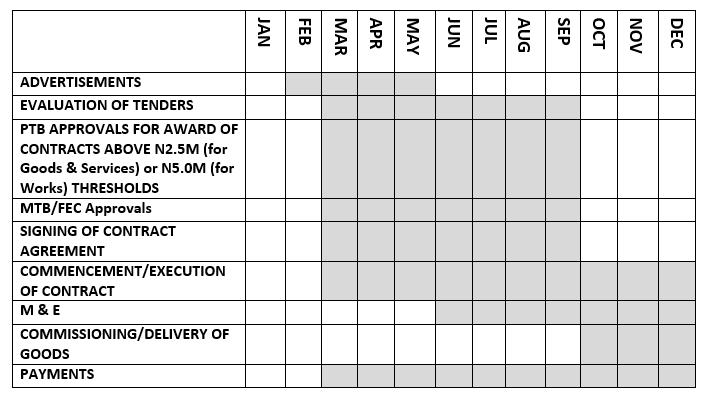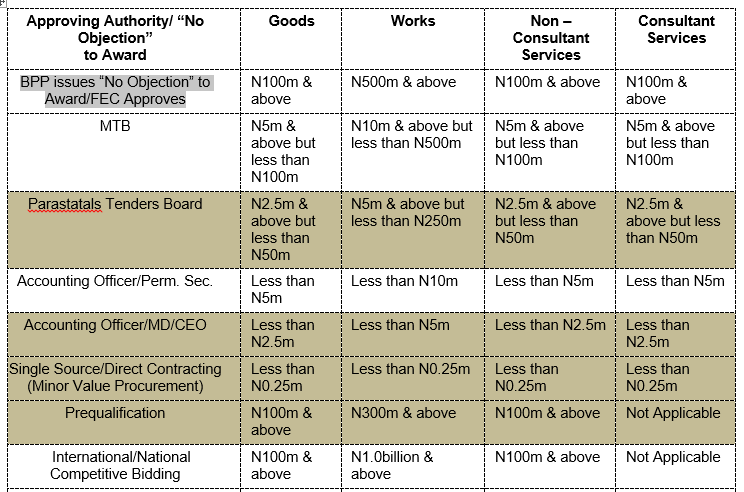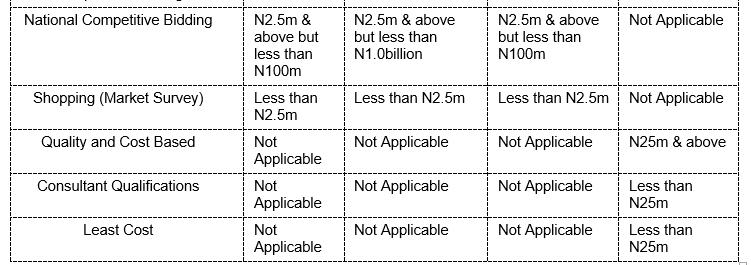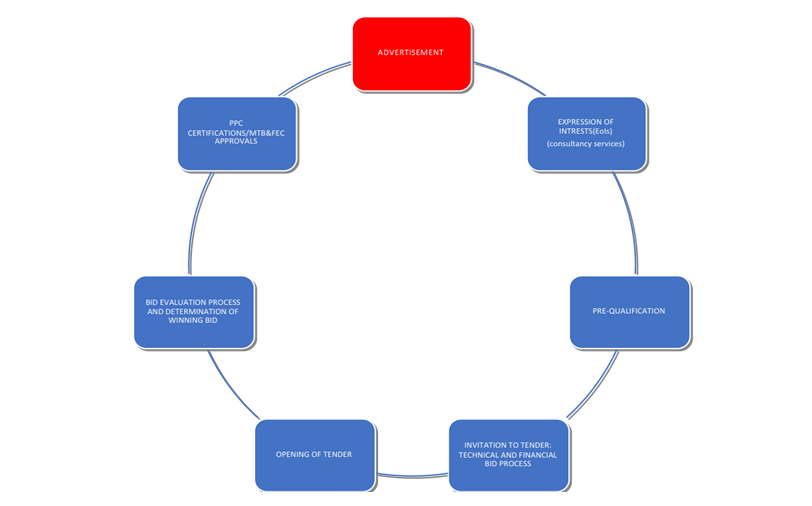Procurement
TENDERS
1.0 INTRODUCTION:
The Procurement Department is the instrument through which the Public Procurement Act 2007 is implemented in the Agency. The Bureau of Public Procurement (BPP) has established general policies and guidelines relating to Public sector procurement, and for supervising procurement implementation as well as reviewing the Procurement procedures and award of contracts of every public entity to which the Public Procurement Act 2007 applies.
The Procurement Department is responsible for procuring all Contracts (Goods, Works and Services) in the Agency. The Department is under the direct supervision of the Managing/Director/CEO & Chief Electrical Inspector of the Federation and is coordinated by the Head Procurement.
2.0 OBJECTIVES:
The Unit is guided by the following core objectives:
- Ensuring economy and efficiency in Project implementation including the procurement of goods, works and services
- Giving bidders a fair opportunity to compete in procurement
- Restoring transparency, merit, competition and value for money in the award and execution of Public contracts
- Ensuring that budgeted funds are expended as set in annual appropriations
- Ensuring uniformity in project packaging to conform with approved National standard Tender Documents (STD) for procurement of goods, works and service.
3.0 FUNCTIONS:
Some of the functions perform by the Procurement Department are:
- General Procurement planning and processing of all Contracts (Goods, Works & Services), in compliance with all Due Process guidelines.
- Monitoring and Evaluation of Contracts to ensure strict compliance with local and international standards, regulations and specifications.
- Provide secretariat for the meetings of Procurement Planning Committee (PPC) and Parastatal Tenders Board (PTB)
- Carry out negotiations on contracts when necessary
- Issue Letters of Award/Job Order for all approved projects.
4.0 PROCUREMENT PLANNING – WHAT IT ENTAILS
- Identification of needs, assessment & evaluation.
- Identifying the appropriate national standard for goods, works or services required.
- Carry out appropriate market and statistical survey and on that basis prepare cost implications of proposed procurement.
- Collation of requirements to obtain economy of scale and achieve value for money.
4.1 PROCUREMENT PLANNING COMMITTEE (PPC)
- Membership
- MD/CEO & CEIF – Chairperson.
- Procurement Department – to serve as Secretary
- Department/Unit directly in requirement of procurement
- Finance and Accounts Department
- Planning, Policy Analysis & Statistics Department
- Technical personnel of procuring Department/Unit with expertise in the subject matter for each procurement.
- Legal Adviser
4.2 PARASTATAL TENDERS BOARD (PTB)
- Membership
- MD/CEO & CEIF – Chairperson.
- Procurement Department– to serve as Secretary
- All Heads of Directorate and Department within the Agency
5.0 WORK PLAN
With the expected early passage of the yearly Appropriation, and the cooperation of procuring Directorates/Departments/Units of the Agency, the Department intends to conclude all procurement processes by September. This is with a view to ensuring full implementation of the Appropriation as passed by the National Assembly. Consequently, the Department has drawn up a tentative work plan towards achieving this goal.
5.1 The Work Plan for Yearly Procurements (Capital & Recurrent) is as tabled below:

6.0 APPROVAL THRESHOLDS:
- The Department reviews and certifies Federal Government Contracts according to established and approved thresholds as stated below:


7.0 BASIC RULES OF PROCUREMENT
Procurement cycle:

Advertisement: Equal access to information by all possible participants in the market of public contracts is fundamental to a free and fair competition. This ensures effectiveness, efficiency and value-for-money in public procurement. Advertisement requirement is thus very important for passing the Due Process Compliance rule for openness and provision of level playing field for fair competition through an Open Tender.
The Agency is responsible for advertising directly, all its invitations for pre-qualification or Tender for goods, works and services. The medium ranges from Notice boards, National dailies, International publications, Web sites and the Federal Tenders Journal based on the contract categorization.
Expression of Interests (EoIs): The Agency advertises requests for “Expressions of Interest” (EoI) from interested firms in at least two widely distributed publications, the procurement journal, and on the Procuring Entity’s website.
Pre-qualification: This involves the analyses of the submissions made by respondents to the Advert and is usually based on an objective set of technical and financial capacity criteria. The purpose is to short-list and select competent respondents to the advert. It is also an opportunity to weed out those who do not qualify to be adjudged competent to participate in the financial bid. The criteria usually include scores totalling 100% while the qualification benchmark within and above which respondents can be considered competent is a score of 70% and above.
Invitation to Tender/Bid and Opening of Tender: After the issuance and submission of tender documents, opening of the bid/tender of pre-qualified bidder must take place immediately after the closing of the bidding/tendering period. Bidders or their representatives and members of civil society are expected to witness the tender opening. Technical bids opening precede the financial bids opening.
The last stage is the Tender evaluation for financial proposals after which the lowest evaluated tender cost usually referred to as the lowest evaluated most responsive bid is adjudged the winning bid. Simply put, the winner in a competitive bid process is that competent bidder (pre-qualified and technically evaluated bidder) that comes out of the financial competition offering the lowest most responsive price for the execution of the contract.
7.0 THE THREE-WAY TEST
The three-way test that guides procurement is built on the following:
- The process is open, transparent and competitive
- The right, competent and successful bidder is recommended
- The price is right, the quantity is right, the quality is right, the time is right and achieves value for money.
